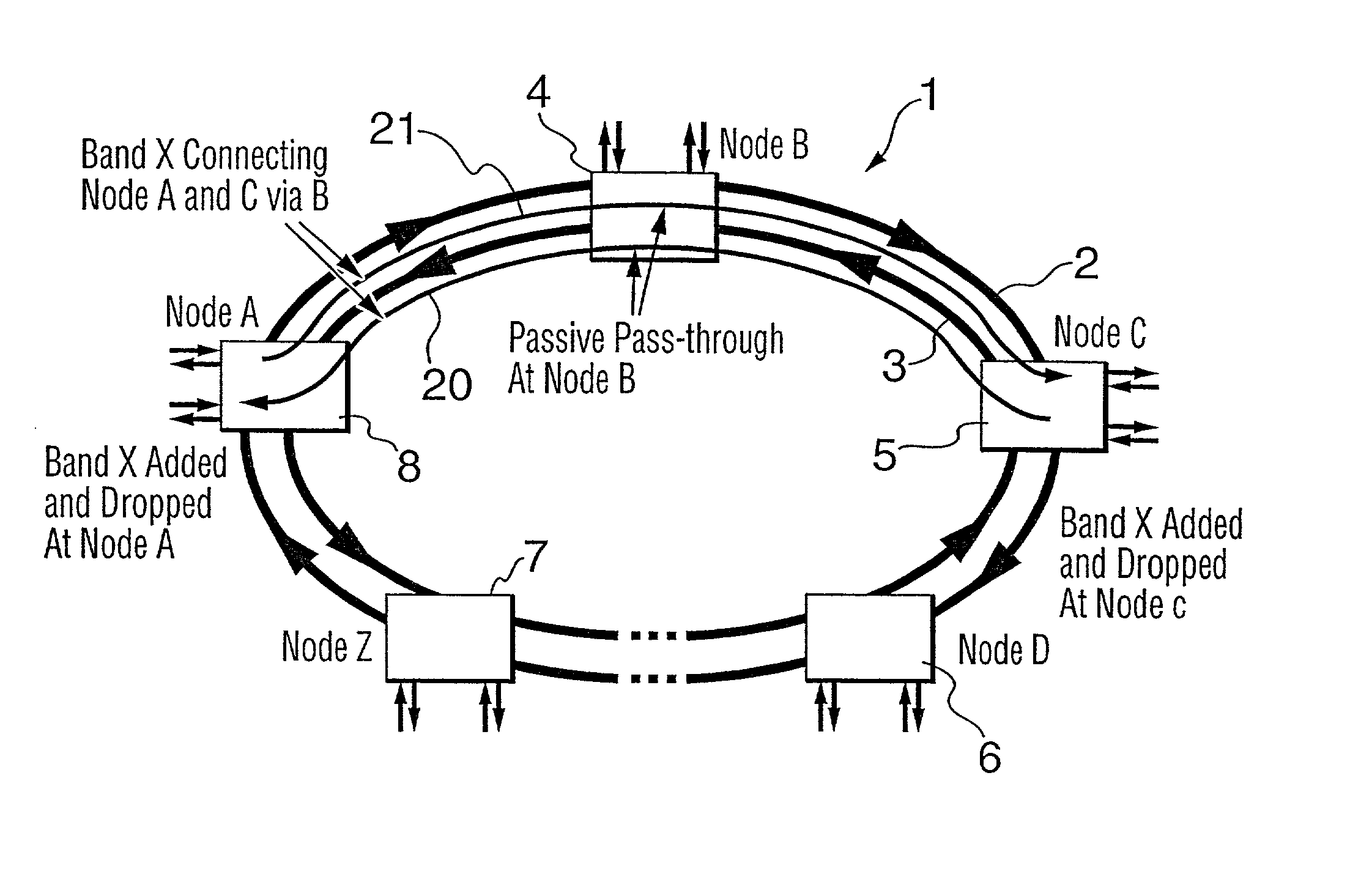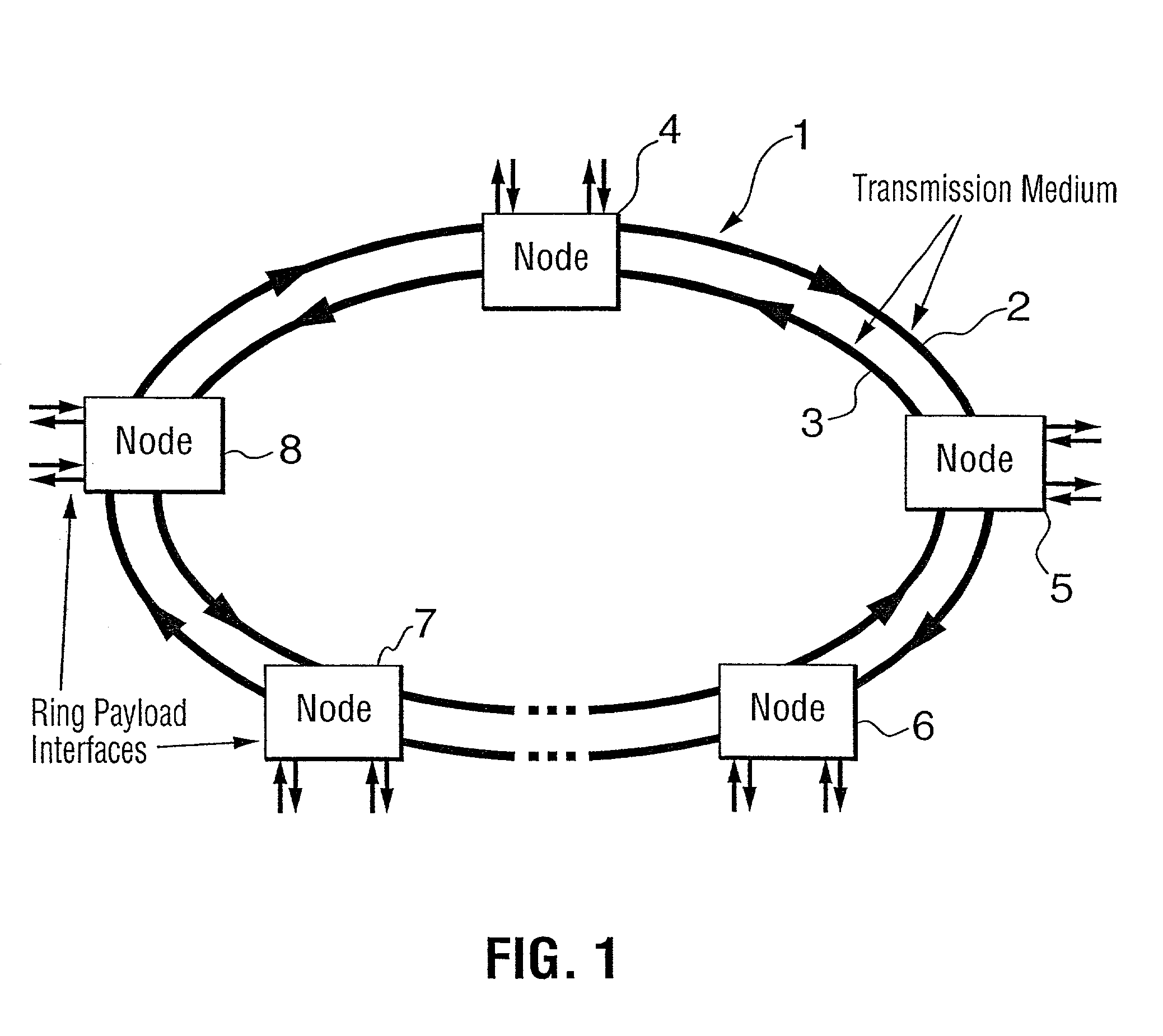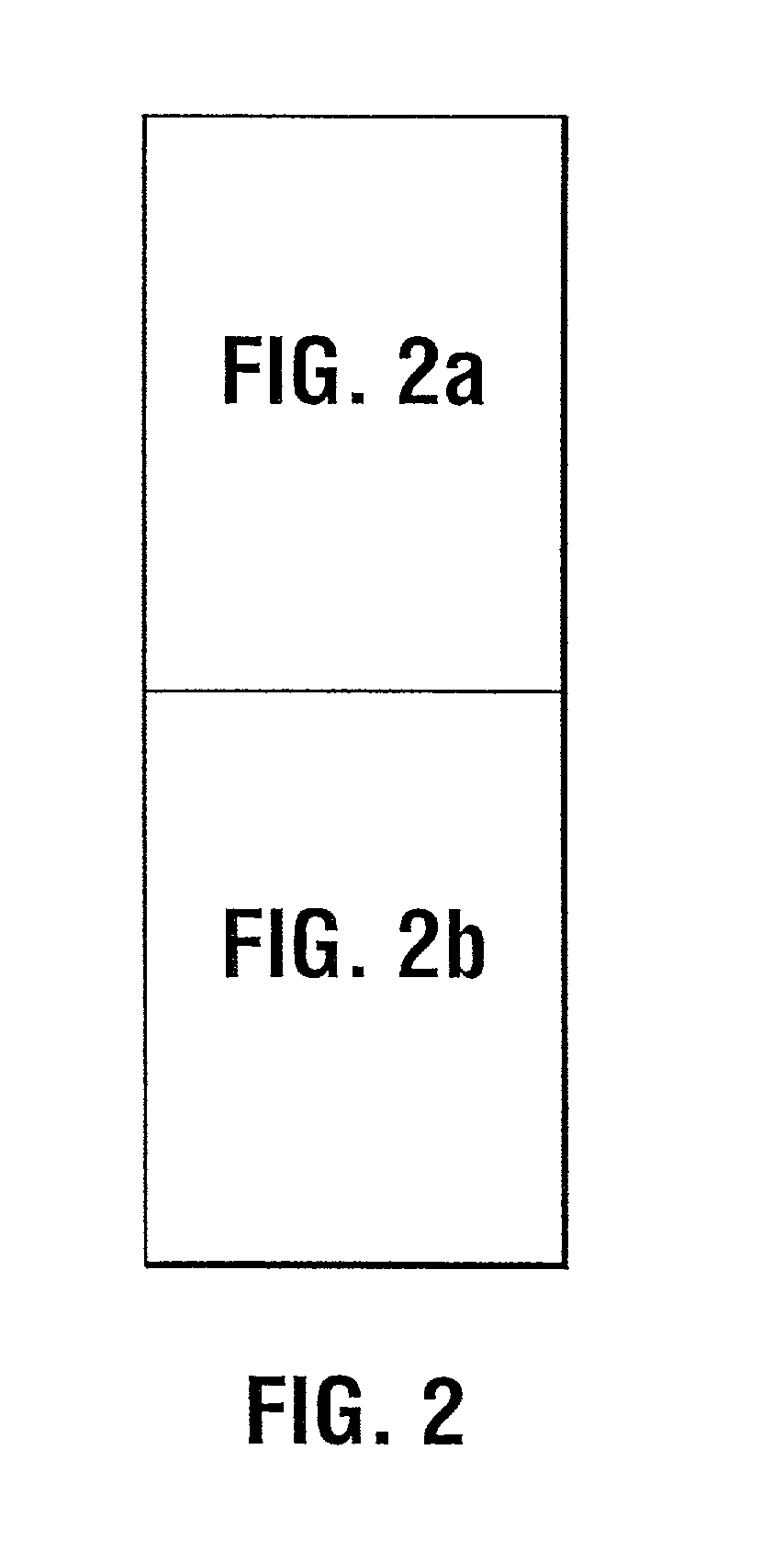WDM optical network and switching node with pilot tone communications
a technology of optical network and switching node, which is applied in the direction of multiplex communication, transmission monitoring, electromagnetic repeaters, etc., can solve the problems of slow and costly process of upgrading the capacity of the ring, the entire network may have to be upgraded, and the new payload cannot be transported. , to achieve the effect of low overall loss and minimal loss
- Summary
- Abstract
- Description
- Claims
- Application Information
AI Technical Summary
Benefits of technology
Problems solved by technology
Method used
Image
Examples
Embodiment Construction
[0039] Referring now to FIG. 1, a WDM (Wavelength division Multiplexed) ring network generally referenced I consists of two counter rotating rings 2, 3 containing a plurality of nodes 4, 5, 6, 7, 8 providing interfaces to the rings 2, 3. It will be understood that FIG. 1 shows the physical layout of the network. The rings 2, 3 physically consist of optical fibers, which are capable of carrying multiple wavelengths generated by lasers in the nodes. The interconnectivity between the nodes is provided by WDM connections in a manner to be described.
[0040] Each ring may carry, for example, 16 or 32 wavelengths divided into eight bands, which provide the interconnectivity between the nodes. Typically there are either two or four wavelengths per band. With eight bands, there are therefore a total of 16 wavelengths per ring for two wavelengths per band or 32 wavelengths in the case of four wavelengths per band, for example, spaced at 1.6 nm with a guard band of 3.2 nm for a total spacing of...
PUM
 Login to View More
Login to View More Abstract
Description
Claims
Application Information
 Login to View More
Login to View More - R&D
- Intellectual Property
- Life Sciences
- Materials
- Tech Scout
- Unparalleled Data Quality
- Higher Quality Content
- 60% Fewer Hallucinations
Browse by: Latest US Patents, China's latest patents, Technical Efficacy Thesaurus, Application Domain, Technology Topic, Popular Technical Reports.
© 2025 PatSnap. All rights reserved.Legal|Privacy policy|Modern Slavery Act Transparency Statement|Sitemap|About US| Contact US: help@patsnap.com



